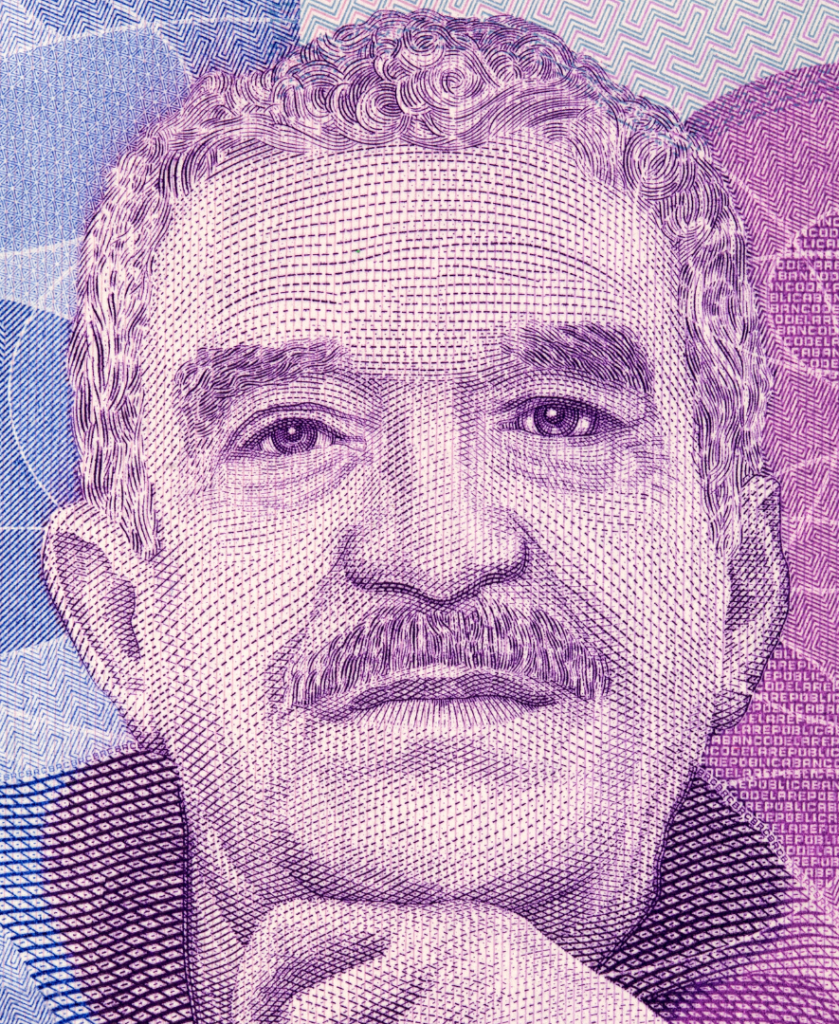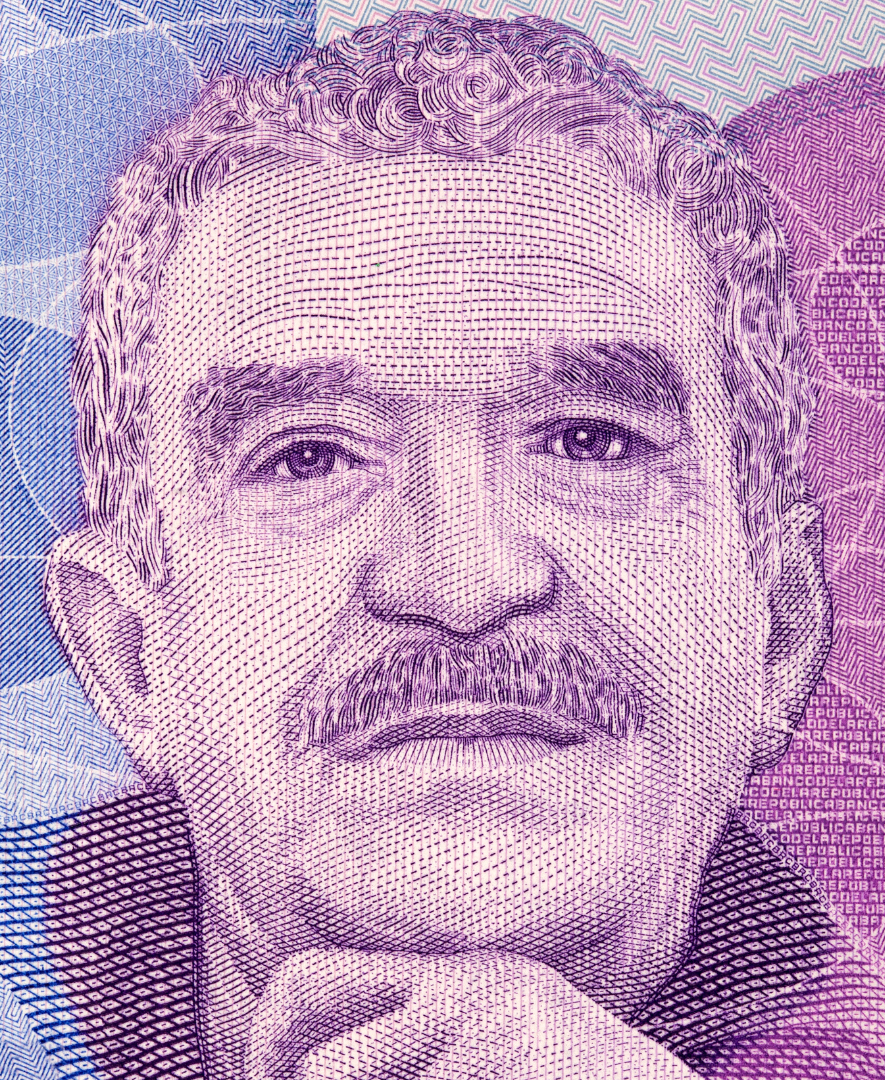Gabriel García Márquez

-
Save
In this post you'll find:
- Many interesting facts about Gabriel García Márquez,
- bibliography of the Colombian writer,
- interactive exercises to test your knowledge on Gabriel García Márquez.
Intro
“Muchos años después, frente al pelotón de fusilamiento,
el coronel Aureliano Buendía había de recordar aquella
tarde remota en que su padre lo llevó a conocer el hielo.”
(Cien años de soledad, Gabriel García Márquez)
This is the first sentence of one of the most international novels in Hispanic literature. Cien años de soledad is the mythical novel by the Colombian Gabriel García Márquez, winner of the Nobel Prize for Literature in 1982. If you haven’t read this book yet, here’s a video explaining why you should read Cien años de soledad.
But wait a minute, why are we talking about Gabriel García Márquez right now? It’s very easy, next March 6th is his birthday and his new novel, En agosto nos vemos, will be published. If you don’t know the author, this news may not surprise you, but if you know who he is, you will probably be very surprised because Gabriel García Márquez died ten years ago. How is it possible that he has a new book in 2024? It’s very simple, a commission was going through his papers and found this novel that he had never published.
If you are curious to know what this novel will be like, here is the synopsis made by the publisher itself:
Every August Ana Magdalena Bach takes the ferry to the island where her mother is buried to visit her grave. These visits are an invitation to become a different person for one night a year.
(Extracted and adapted from: penguinlibros.com)
Who was Gabriel García Márquez?
Gabriel García Márquez, also known as Gabo, was a Colombian journalist and writer. He was born in 1927 in Aracataca, in northern Colombia.
While studying law at the Faculty of Law and Political Science at the National University of Bogotá, a violent social uprising led to the closure of the university. For this reason he moved to Cartagena and started working as a journalist. He never completed his university studies.
He worked for different newspapers and magazines in Latin America and was a correspondent in Europe and New York. While working as a journalist he also wrote short stories and novels that he published in different media in a serialised way. For example: Relato de un náufrago, La hojarasca, etc.
Relato de un náufrago was a 14-part serialised reportage published in the newspaper El Espectador.
In 1955 he published his first novel, La hojarasca, but he was not internationally recognised until 1967 with the full publication of Cien años de soledad (One Hundred Years of Solitude).
He had a very good relationship with Fidel Castro and different prominent figures of socialism, which cost him many criticisms and threats from Cuban dissidents and different American figures.
He died in 2014 after a long illness.
Why is he so important for Hispanic Literature?
His importance lies in the fact that he is one of the main representatives of Magical Realism. It is about introducing magical, fantastic or supernatural elements into a story in a natural way and giving a touch of fascination to the most ordinary ones.
It should also be noted that he wrote some of the most important novels in Hispanic literature: Cien años de soledad (One Hundred Years of Solitude), Crónica de una muerte anunciada (Chronicle of a Death Foretold), etc.
His works have been translated into more than 25 languages and he’s internationally known. In addition, his novels are part of university and secondary studies at numerous universities and schools around the world.
Which books did Gabriel García Márquez write?
Among the many books written by this author, there are novels, plays, short story anthologies, non-fiction books and compilations of his work as a journalist. Here are the main fiction books and some non-fiction books. Have you read any of them?
- Relato de un náufrago, 1955.
- La hojarasca, 1955.
- El coronel no tiene quien le escriba, 1961.
- La mala hora, 1962.
- Los funerales de la Mamá Grande, 1962.
- Cien años de soledad, 1967.
- La increíble y triste historia de la cándida Eréndira y de su abuela desalmada, 1972.
- Ojos de perro azul, 1972.
- El otoño del patriarca, 1975.
- Crónica de una muerte anunciada, 1981.
- El amor en los tiempos del cólera, 1985.
- La aventura de Miguel Littín clandestino en Chile, 1986.
- El general en su laberinto, 1989.
- Doce cuentos peregrinos, 1992.
- Del amor y otros demonios, 1994.
- Diatriba de amor contra un hombre inteligentemente sentado, 1994.
- Noticia de un secuestro, 1996.
- Vivir para contarla, 2002.
- Memorias de mis putas tristes, 2004.
- En agosto nos vemos, 2024.
Film and TV adaptations of his novels and short stories
There are many short stories and novels that have been adapted for film or television. Here you have the complete list, but we wanted to bring you a small selection.
Noticia de un secuestro, 2022
El coronel no tiene quien le escriba, 1999
El amor en los tiempos del cólera, 2007
Test your Knowledge!
Now you know a little bit more about one of the most widely read Hispanic writers of all time. Would you like to test your knowledge of Gabriel García Márquez? If the answer is yes, here are some exercises to practice with us. Shall we get started?

-
Save
Would You like to Take Your Spanish to the Next Level?
Whether you’re a complete beginner or you’re an advanced student, with us you’ll reach the next level of Spanish quickly and easily. With 24 Levels to Spanish fluency, the next level is always close by, so you will never lose motivation.
You can choose between:
In both cases, you’ll learn Spanish using our successful 24 Level System to Spanish Fluency® and our unique Spanish teaching methods.
Cultura con Juanjo: the Spanish Podcast Series
Keep learning all about our unique customs and traditions with our own exclusive podcast about Hispanic culture. This time our host Juanjo brings you Las señoritas de Avignon, one of Picasso’s masterpieces. Listen and enjoy!

-
Save











